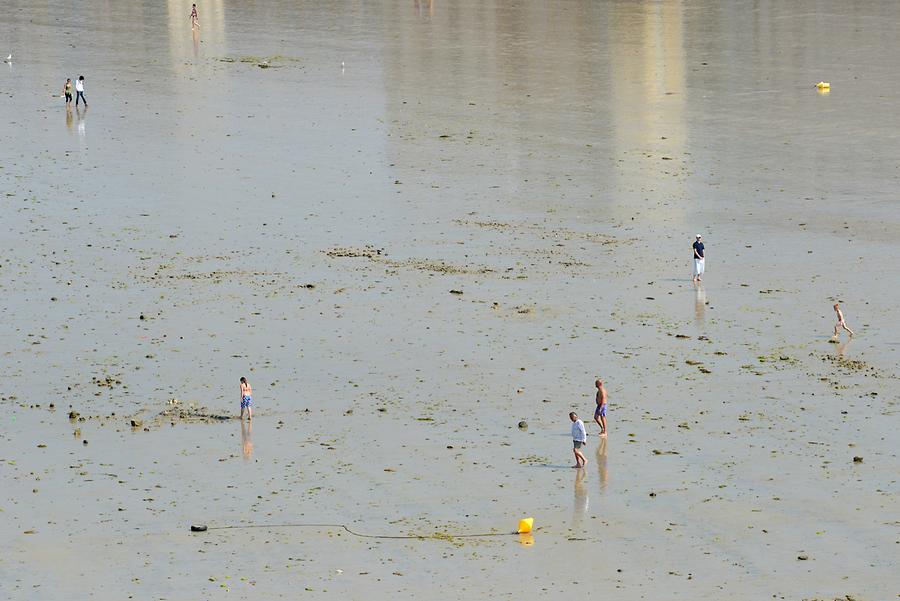Tide Change#

Tide Change, August 2014, © Gerhard Huber, under CC BY-NC 4.0 +Edu
Like no other region in Europe, the coast of Brittany is influenced by the tides. The tidal range - the difference between high and low tide - can amount to 13 m here. At the minimum, the difference is 3 m 40. Tides are primarily caused by the attraction between the globe and the moon. The moon attracts the water of the oceans. The side facing the moon produces a water wall. However, this also happens on the averted side - caused by centrifugal forces. In the course of 25 hours, the moon circles the globe that quasi rotates underneath the mass of water. Hence every six and a quarter of hours a switch between high and low tide occurs, meaning that six and a quarter of hours the water rises and it drops again equally. The gravitation of the sun further strengthens the tidal range at full moon and new moon, when the sun, the moon and the globe are in a line, and a so-called spring tide occurs. Crescent Moon, when the globe, the moon and the sun square each other, negates the gravitational forces partially and the tide reached its minimum. This is called 'neap tide'.
Why the tides are so dramatically visible in Brittany of all countries is due to the geometric shape of its coasts and bays. While the tidal range in the Atlantic Ocean is only half a meter, the tidal wave increases by passing narrows up to 13 m.
Wie kaum eine andere Region Europas ist die bretonische Küste durch den Gezeitenwechsel geprägt. Bis zu 13 m kann hier der Tidenhub – die Differenz zwischen Ebbe und Flut betragen. Im Minimum liegt die Differenz bei 3 m 40. Gezeiten entstehen vor allem durch die Anziehungskraft zwischen Mond und Erde. Der Mond zieht das Wasser der Ozeane an. Auf der mondzugewandten Seite entsteht ein Flutberg. Dieser bildet sich jedoch auch auf der mondabgewandten Seite – bedingt durch Fliehkräfte. Im Laufe von 25 Stunden wandert der Mond einmal um die Erde, die sich gleichsam unter den Flutbergen dreht. Daher kommt es alle sechseinviertel Stunden zu einem Wechsel zwischen Ebbe und Flut, d.h. sechseinviertel Stunden lang steigt das Wasser und genauso lange geht es wieder zurück. Bei Voll- und Neumond, wenn Sonne, Mond und Erde in einer Linie stehen, verstärkt die Anziehungskraft der Sonne nochmals den Flutberg und es kommt zur sogenannten Springflut. Bei Halbmond, wenn Erde, Mond und Sonne in rechtem Winkel stehen, heben sich die Gravitationskräfte zum Teil auf und die Gezeiten erreichen ihren minimalen Wert. Man spricht von Nippflut.
Warum die Gezeiten ausgerechnet in der Bretagne so dramatisch sichtbar werden, liegt an der geometrischen Form der Küsten und Buchten. Während der Tidenhub im Atlantik nur einen halben Meter beträgt, steigt die Flutwelle durch das Passieren von Engstellen bis auf 13 m Höhe an.